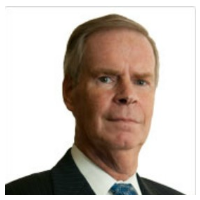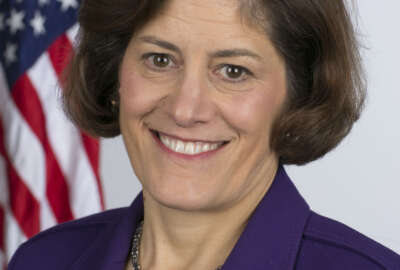
How CXOs can close the value-proposition gap
The Treasury Department has developed a financial management maturity model to help agencies understand mission value of the CFO’s office.
Federal financial managers received some shrewd advice last week. Stop talking like financial managers.
Stop talking about clean opinions. Don’t talk about material weaknesses. You don’t need to mention the CFO Act or the Digital Accountability and Transparency (DATA) Act.
With new leaders coming in across every agency, federal financial managers, instead, should focus on value and mission support.
Adam Goldberg, the executive architect at the Treasury Department’s Financial Innovation and Transformation (FIT), said by focusing on how the CFO’s office furthers the agency’s mission, agency budget and financial management executives can change the conversation about back-office functions.
Goldberg said when he talks about the Fiscal Service he focuses on the 269 auctions the agency conducted in 2016 and how it awarded $6.9 trillion in Treasury marketable securities — the money that funds the government on a day-to-day basis.
“We issued over $2.6 trillion in federal payments, including Social Security, veterans benefits and income tax refunds. We are giving money to people who have paid into the system, who have worked hard in the system and now are using this to fill their day-to-day needs,” Goldberg said at the Association of Government Accountants National Leadership Training conference in Washington. “We collected over $3.98 trillion in federal revenue, again money we are using to operate the government. We collected over $7.2 billion in delinquent debt. These are the things we do on a day-to-day basis and I think these are the type of things that we can all talk about when we speak about our organization.”
It’s not just collecting and issuing money. But it’s paying teachers who work for the Bureau of Indian Affairs school system. Or how the FBI CFO’s office is simplifying its policies so non-financial experts know how best to follow them, and they are making it easier for agents to submit travel vouchers or book flights or ensure funds are available so they can travel.
“We have to be very transparent. We have to have clarity,” said Kamile Narine, accounting section chief at the FBI.
Richard Haley, the FBI CFO, said his folks have to communicate in the language that agents and leaders use every day. He said they shouldn’t have to work hard to understand financial management initiatives.
Goldberg said it’s about shifting the conversation to talk about what the agency needs to better support agency operations.
“One of the things we really haven’t done a good job of is putting them in a framework in terms of how can we put all this together and begin to think about how we can improve as an organization or how can I deliver the things better than I’m doing today versus I’m delivering compliance with the [improper payments] act or delivering compliance with the DATA Act?” he said. “What are the actual capabilities that I’m enabling within my organization to better support the mission, the payment, the collections, the other things I’m trying to do in my organization?”
What Goldberg, Narine and others are describing doesn’t just apply to the federal financial world.
Federal technology, acquisition and human resources executives and employees should take on a similar charge.
The point of the Federal IT Acquisition Reform Act (FITARA), for example, aims to close the gap between IT, acquisition and mission areas. It forces the chief information officer into discussions about planning and procuring mission critical technology.
In the human resources world, we’ve heard about chief human capital officers begging and pleading mission area hiring managers to make decisions, review applications and are involved in every step of the process. The Office of Personnel Management issued guidance in November stressing the need to engage and empower hiring managers.
The idea behind all of these efforts is to break down the siloes that have built up over time for probably no real reason, creates layers of inefficiency and leads to the perception of a stilted bureaucracy and inefficiency.
Treasury is trying to help agencies remove these barriers for the financial management folks. The department is developing a maturity model to help agencies think about how their CFO offices are impacting mission beyond just “being the money people.”
“We want to begin to think about things as far as where do I want to be as a business and where do I think my business needs to be,” Goldberg said. “Agencies have a number of ongoing initiatives and thought we needed a reference source we could give to people so they support those mandates and improve their organization.”
The maturity model defines five levels:
- Inadequate — This is where an organization’s practices are deficient and struggles with the day-to-day activities.
- Basic — The organization still is inefficient, but getting their work done.
- Capable — This is when the office is supporting their agency’s operations, but face strains circumstances change.
- Effective — The office’s practices are more robust and supported by continuous improvement efforts.
- Leading — The organization’s practices anticipate challenges and creates solutions proactively.
Goldberg said the goal is not necessarily to get every agency to be a leading organization. But each office needs to figure out how to get to at least the capable level.
Goldberg said the model is based on those for software development, Capability Maturity Model Integration (CMMI) or green buildings, Leadership in Energy and Environmental Design (LEED).
“What we are doing with this model is coming up with some lower level factors that one could look at and self-assess,” he said. “The factors we are looking at right now are services, which really are the operations areas, the payments, the collections, the accounting and the reporting type of stuff. The next thing we will be looking at financial systems and information management. What are the capabilities of our systems? How well integrated are they within my business? How am I using data to inform the decisions that we need to make? Lastly, we aren’t forgetting the oldie but goodie, the thing that drives us day-to-day, which is compliance. Am I getting the clean audits? Am I getting no material weaknesses? Am I being found to be in compliance? We will have different elements at each level where someone could self-assess.”
Goldberg emphasized the goal of the model is one of self-assessment where agencies can define where they want to be and then set goals to achieve the maturity level rather than compliance and oversight by Treasury or the Office of Management and Budget.
Treasury has been developing the maturity model over the last few months and plans to test it out with a few agencies later this year. The agency also is working closely with the CFO Council to socialize the idea and get feedback.
“We want people to say where they want to be and see how they can make an investment to get there,” Goldberg said.
Pretty good advice for all CXOs as they try to continually improve and add value to mission.
Return to the Reporter’s Notebook
Copyright © 2025 Federal News Network. All rights reserved. This website is not intended for users located within the European Economic Area.
Jason Miller is executive editor of Federal News Network and directs news coverage on the people, policy and programs of the federal government.
Follow @jmillerWFED





